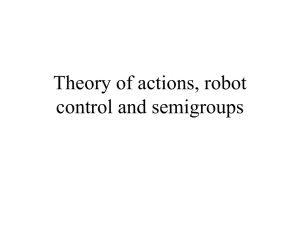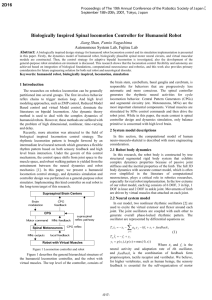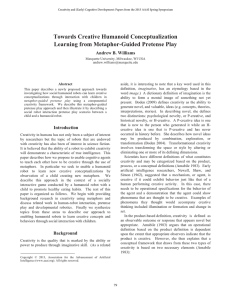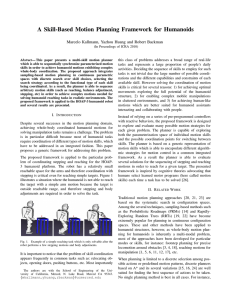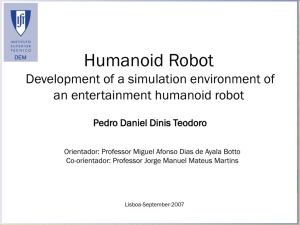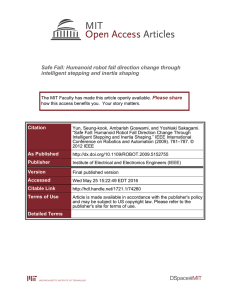Analysis of tactical Structures in team handball by means of artificial
advertisement
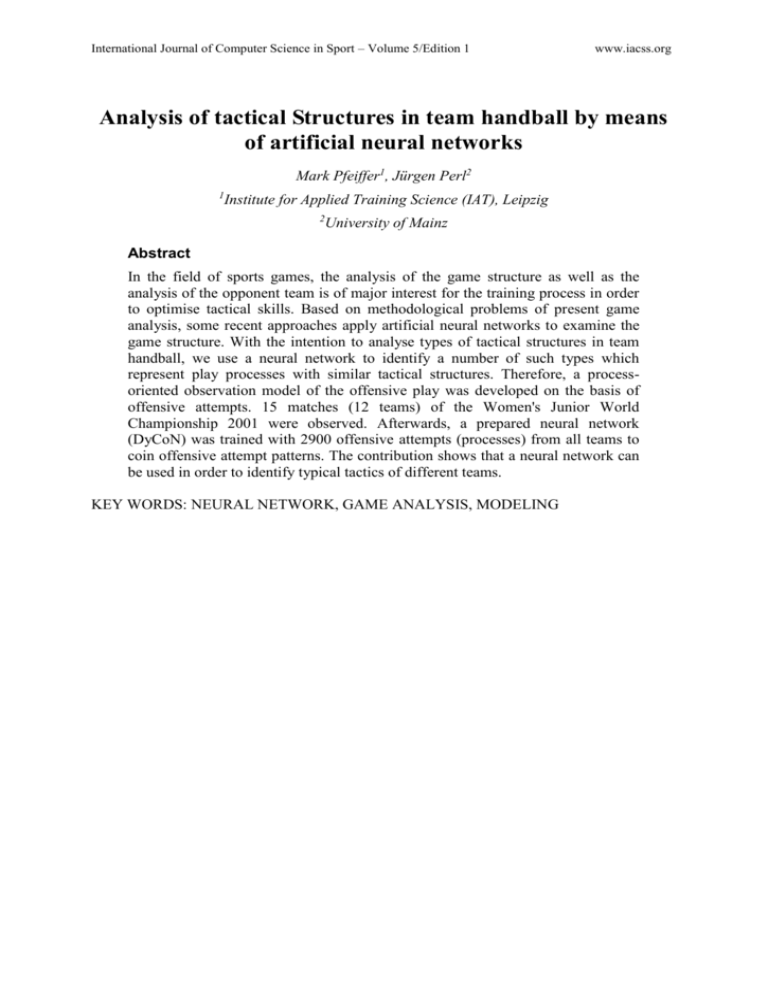
International Journal of Computer Science in Sport – Volume 5/Edition 1 www.iacss.org Analysis of tactical Structures in team handball by means of artificial neural networks Mark Pfeiffer1, Jürgen Perl2 1 Institute for Applied Training Science (IAT), Leipzig 2 University of Mainz Abstract In the field of sports games, the analysis of the game structure as well as the analysis of the opponent team is of major interest for the training process in order to optimise tactical skills. Based on methodological problems of present game analysis, some recent approaches apply artificial neural networks to examine the game structure. With the intention to analyse types of tactical structures in team handball, we use a neural network to identify a number of such types which represent play processes with similar tactical structures. Therefore, a processoriented observation model of the offensive play was developed on the basis of offensive attempts. 15 matches (12 teams) of the Women's Junior World Championship 2001 were observed. Afterwards, a prepared neural network (DyCoN) was trained with 2900 offensive attempts (processes) from all teams to coin offensive attempt patterns. The contribution shows that a neural network can be used in order to identify typical tactics of different teams. KEY WORDS: NEURAL NETWORK, GAME ANALYSIS, MODELING International Journal of Computer Science in Sport – Volume 5/Edition 1 www.iacss.org Guidelines for motion control of humanoid robots: Analysis and modeling of human movements Thorsten Stein1, Andreas Fischer1, Klaus Bös1, Veit Wank2 Ingo Boesnach3, Jörg Moldenhauer3 1 Institute for Sports and Sports Science, Universität Karlsruhe (TH), Germany 2 3 Institute for Sports Science, Universität Tübingen, Germany Institute for Algorithms and Cognitive Systems, Universität Karlsruhe (TH), Germany Abstract The objective of the interdisciplinary Collaborative Research Center 588 “Humanoid Robots – Learning and Cooperating Multimodal Robots” is the construction of a humanoid robot. To make the robot attractive for services in households and offices the robot should be able to communicate and to interact with humans. Among other topics, this humanization concerns the strategies of motion planning for the humanoid robot. Besides anthropometric resemblance, the motion of the robot must be comparable to human motion. In this work, we analyze trajectories of limbs and develop guidelines for motion planning based on task-specific characteristics. Based on these guidelines we present adaptive models that are trained to classify single motion phases. A new algorithm is presented to compose these elementary models to large models that recognize complete motion trajectories. Finally, we show how to use the motion models to control the movements of a humanoid robot. KEY WORDS: HUMAN MOTION, MOTION ANALYSIS, HUMANOID ROBOT, MOTION CONTROL International Journal of Computer Science in Sport – Volume 5/Edition 1 www.iacss.org A dynamic approach for modelling and simulation of motor unit discharge behaviour using recurrent fuzzytechniques Mario Heller1 & Kerstin Witte2 1 Section of Biomechanics, Kinesiology and Applied Computer Science, University of Vienna, Austria 2 Institute of Sport Science, Otto-von-Guericke-University Magdeburg, Germany Abstract A dynamic approach for modelling and simulation of motor unit discharge behaviour using recurrent fuzzy-techniques is presented. The model is able to generate a nominal force-time curve by means of the discharge behaviour of a single motor unit pool using the knowledge of various seemingly isolated findings that have been reported. In several simulations, it has been shown that recurrent fuzzy systems are able to approximate dynamic behaviour in terms of nominal/actual force value regulation. First results suggest that there might be optimal motor unit co-ordination patterns relating to a given task: in first MVC-simulations variation of about 10% has been shown. In spite of the difficulties to verify the model experimental examination is necessary to confirm the results. This kind of research is fundamental to understand mechanisms that yield to increased muscle performances in sports. KEY WORDS: MOTOR UNIT DISCHARGE, MODELLING, SIMULATION, RECURRENT FUZZY TECHNIQUE, ISOMETRIC MUSCLE CONTRACTION International Journal of Computer Science in Sport – Volume 5/Edition 1 www.iacss.org Two tests for synergy of player in basketball games Jacek Dembiński1, Ilona Kopocińska2 and Bolesław Kopociński2 1 University School of Physical Education, ul. Paredewskiego 35, 51-612 Wrocław, Poland 2 Mathematical Institute, Wrocław University, pl. Grunwaldzki 2/4, 50-384 Wrocław, Poland Abstract In the analysis of the strength or efficiency of players in a game it is usually assumed that there is no interaction between the strength or efficiency of players against the alternative that players display synergy, i.e a group of players work together better than would be predicted by just considering their individual strengths or efficiencies. This paper deals with two tests for synergy when considering the strength or efficiency of a triplet of players in a game. KEY WORDS: INDIVIDUAL AND GROUPS EFFECT, SYNERGY, BASKETBALL





